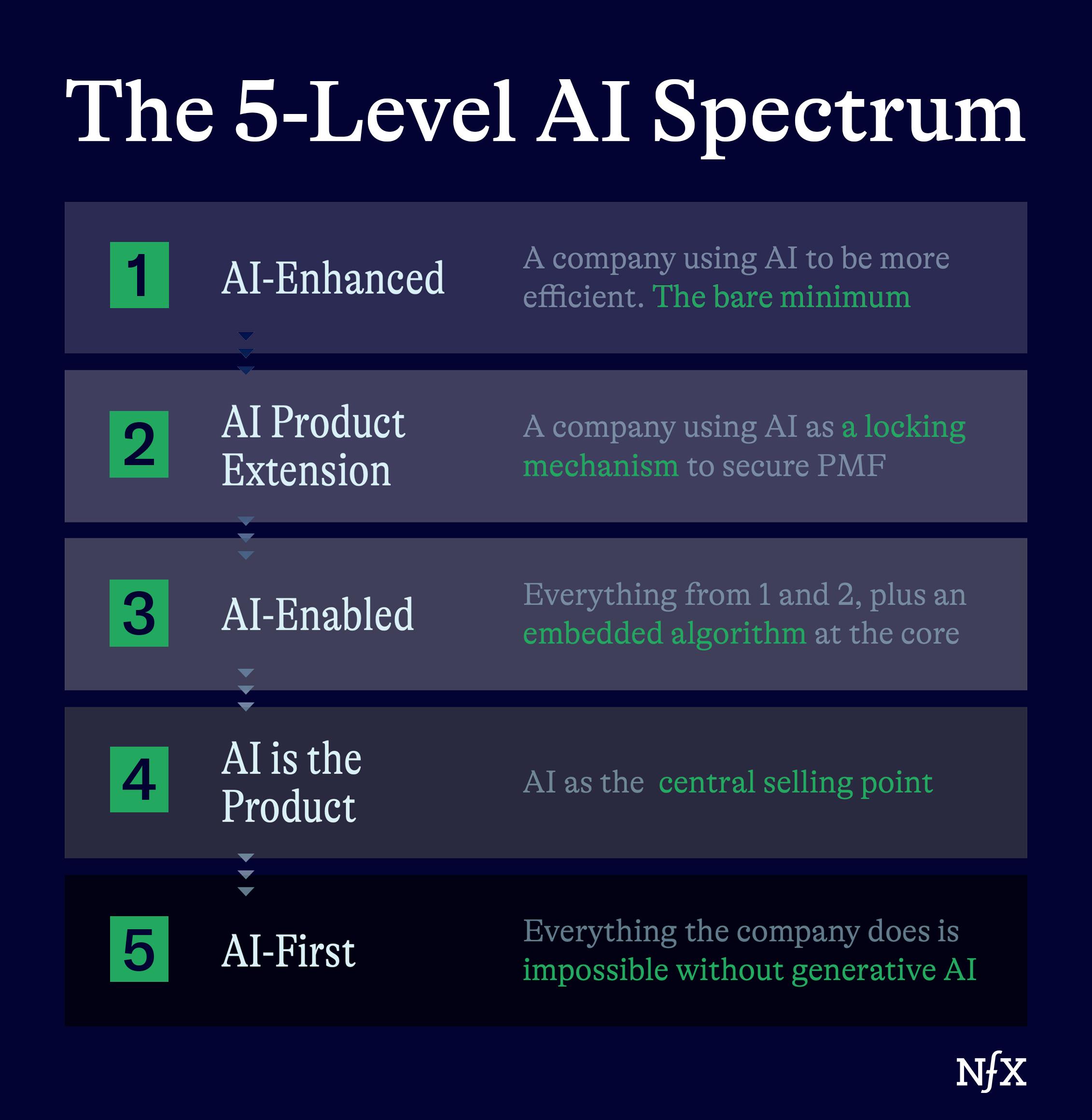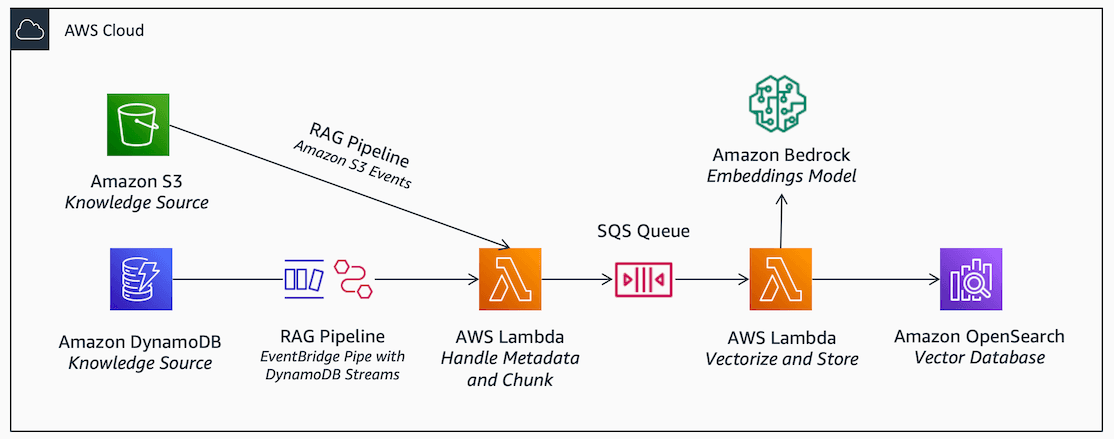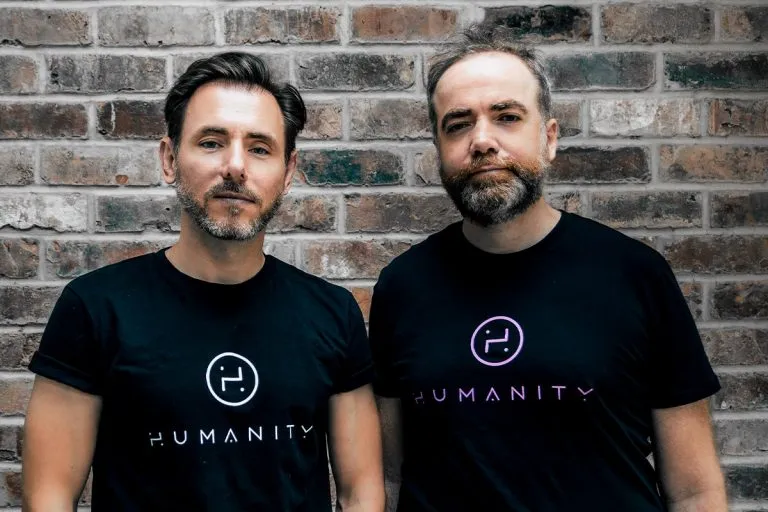In this interview, host Alexandra Brytova sits down with Alex Honchar, Director of AI Engineering and Partner at Neurons Lab. Together, they discuss the game-changing potential of enterprise generative AI, from chatbots to AI-first products and companies.
Discover how generative AI has changed the way companies operate, what is coming up in the near future, and how to avoid the major pitfalls when launching your own enterprise generative AI applications.
What’s the five-level AI spectrum, and how can it help assess the maturity of AI use cases?
NFX, a venture capital investment firm, defines a five-level AI Spectrum, where the first level is the companies that just use AI to be more efficient, for example, using different publicly available chatbots to automate manual tasks.
The second stage is called AI product extension. At this stage, companies are already using AI and data as a locking mechanism; it’s already becoming important to the company, but they don’t really own their own AI algorithms. The deeper you go on the AI spectrum, the more you think about questions like, for example, security. Do you want to give your data to OpenAI? That’s why you already have to use a more secure connection and enterprise solution, for example, from Amazon at level two.
At the third stage, which is called AI-enabled, companies already start using embedded algorithms; they train their own models on proprietary data and own all the infrastructure for it to ensure models are tailored to their metrics.
The next step would be scaling up across your company and your customers. This is level four; AI is becoming the main product. It’s not just a business that is enabled or enhanced by AI. AI is a product. The fifth stage: it’s an AI-first company. Everything the company does is impossible without generative AI.

Where has the generative AI revolution come from?
The AI revolution came from the consumer side, first of all. We can all agree that the generative AI revolution started with the release of ChatGPT, which was available first not only to companies but to regular consumers, and this is impacting a lot of how and why companies are using it.
Generative AI solutions are less tailored to the specific business processes now and more towards consumer interaction, focussing on single person communication to a computer. That is why companies are using it mainly for sales, marketing, personalization, internal knowledge communication, etc.
AI can handle knowledge the same way or even better than humans and communicate faster and in a more comprehensive way. This is where the companies are using generative AI the most.
What are the main threats facing enterprises at all levels of the spectrum?
The main problem is that entrepreneurs and product managers sometimes confuse these five levels and what they really do.
Let’s say a company operates on the second level. For example, they use Amazon Bedrock to process their data, but they advertise it and market it to the general audience or their own employees as an AI-first solution, which is not true. And this is how many startups got killed.
The problem is that they don’t have anything proprietary, no proprietary data or algorithms, trying to capitalize on the hype. Without deep technology knowledge, market knowledge, and customer knowledge, such companies are doomed.
A potential solution would be focusing on a specific niche. For example, doing PDF processing only for insurance companies. Applications that are more specific are becoming even less about technology and more about domain knowledge. About the insurance space knowledge in this case.
The main threat in the current generative AI for enterprise landscape is confusing what level you actually are and going into a competition where you’re not ready to compete.

Is it important to have proprietary data and algorithms?
A couple of years ago, the paradigm of AI was developing all the models from scratch because there were no GPT-like models. You had to bring Ph.D.s, data scientists, or scientists in general to create AI. The proprietary technology and code were the main value proposition.
Right now, most solutions are coming from the open source or from cloud providers, such as Amazon Web Services. Everyone knows that it’s not proprietary, and companies don’t own the technology.
You might own unique data, which can be one kind of differentiator. But what is even better is to own distribution channels and business expertise. Understanding your customer’s pain points is becoming much more important than just writing prompts to any language model.
At Neurons Lab, before we do any kind of engagement, we try to understand if what we are planning to build will impact the business positively and optimize specific business metrics.
During the two-week-long AI Design Sprint, we help our clients to understand and tune their cases much better, define a clear vision of the metrics, and analyze the competitors and the alternative solutions out there. As the end result, we can either have a good business case to implement together or identify an alternative way to solve the business problem with AI or without AI.
How can organizations make a start with generative AI?
The first step is to structure your knowledge and structure your strategy. This is why the five-level AI spectrum is useful.
Going step by step is usually a strategy that will not fail you. Starting with chatbots to automate mundane tasks will bring immediate benefits to a company. The next step is hosting models on your own server and building your own cloud infrastructure.
To tune your models with your data and your metrics, you will need a data scientist to prepare the data, clean the data, build the pipeline, re-train the models, evaluate them, deploy them to the pipeline, and run A/B tests. This already becoming a scientific engineering process. But initially, you should aim from step one and build your knowledge and understanding to improve your business in a much easier way as well.









